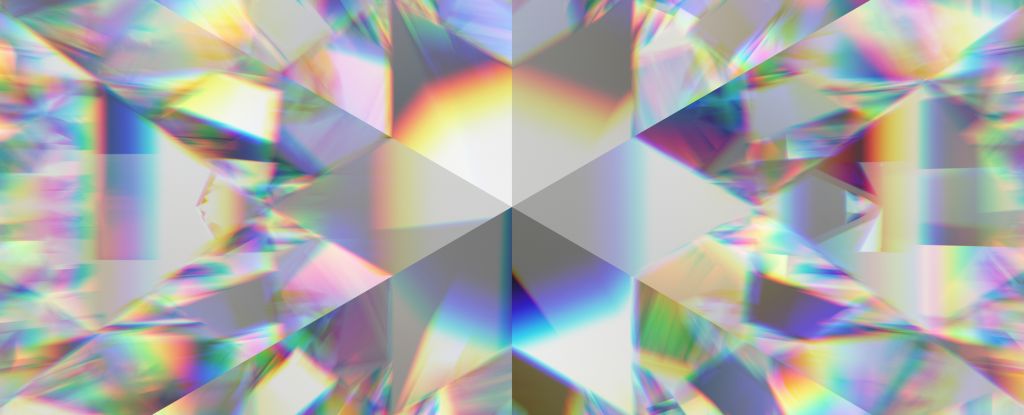Scientists have blown up a bunch of atoms like balloons to make an extreme version of an ‘impossible’ state of matter.
By blasting rubidium atoms with lasers, physicists have excited them into a puffy Rydberg state in an experiment that results in the exotic state of matter known as a time crystal.
This, the team says, opens up a new way to explore the properties of time crystals, as well as phenomena such as quantum fluctuations, correlation, and synchronization – an important factor in designing quantum computers.
First described by US theoretical physicist Frank Wilczek in 2012, time crystals are movements of particles that repeat in a temporal dimension, similar to how crystals like diamond and quartz are patterns of particles repeating in space.
While the original theory described patterns repeating in a ‘perpetual’ fashion, ‘temporary’ versions have been experimentally realized and observed in different ways by different teams of physicists. In these, oscillating patterns that are distinct from any external rhythms imposed on the crystal can be measured.
This new kind of time crystal has been generated from a room-temperature gas of rubidium atoms confined in a glass container.
A team of physicists led by Xiaoling Wu, Zhuqing Wang, and Fan Yang at Tsinghua University in China used laser light to excite the atom to Rydberg states. That’s when the energy is added to the atom in such a way that the outermost electrons describe larger orbits around the nucleus, essentially puffing the atom to up to hundreds of times its normal radius.
That’s still pretty small from our point of view, but it has an interesting effect on the way the atoms interact when they’re all clustered together in a glass box.
“If the atoms in our glass container are prepared in such Rydberg states and their diameter becomes huge, then the forces between these atoms also become very large,” explains physicist Thomas Pohl of the Vienna University of Technology.
“And that in turn changes the way they interact with the laser. If you choose laser light in such a way that it can excite two different Rydberg states in each atom at the same time, then a feedback loop is generated that causes spontaneous oscillations between the two atomic states. This in turn also leads to oscillating light absorption.”
So, when the team excited their rubidium gas with laser light, something exciting happened. Although the laser had a constant intensity, when they measured the light at the far end of the container, they saw signs of atomic oscillation as the atoms ticked back and forth between an excited state to a less excited state.
These oscillations had emerged organically, thus meeting the definition of a time crystal.
“This is actually a static experiment in which no specific rhythm is imposed on the system,” Pohl says. “The interactions between light and atoms are always the same, the laser beam has a constant intensity. But surprisingly, it turned out that the intensity that arrives at the other end of the glass cell begins to oscillate in highly regular patterns.”
This has potential applications in technology that requires highly regular, self-sustained oscillations. Metrology, for example – the science of measurement – could make use of such a system. And quantum information processing based on Rydberg atoms would be a powerful tool for computing applications.
“We have created a new system here that provides a powerful platform for deepening our understanding of the time crystal phenomenon in a way that comes very close to Frank Wilczek’s original idea,” Pohl says.
The research has been published in Nature Physics.




















Discussion about this post